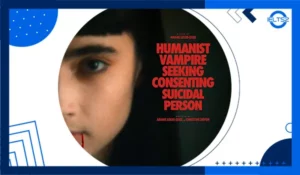نمونه سوالات اسپیکینگ آیلتس درباره دروغ رسانی (پارت 1 2 3)
در این بخش بیش از 20 مورد از نمونه سوالات اسپیکینگ آیلتس نمره 9 درباره موضوع دروغ رسانی را با هم میبینیم. این مجموعه از آخرین سوالات گزارش شده از سنترهای برگزار کننده آیلتس در ایران و خارج از کشور مربوط به پارت 1، 2 و 3 می باشند و شانس تکرار آن ها در آینده بالاست. در ادامه مطلب همچنین نکات گرامری، لغات و دلایل دریافت نمره 9 را به طور مشخص توضیح داده ایم تا راهنمایی برای علاقمندان باشد. 1000 نمونه سوالات اسپیکینگ آیلتس با جواب PDF پارت 1 2 3 پیشنهاد بعدی ما به شما عزیزان است.
نمونه سوالات اسپیکینگ آیلتس درباره دروغ رسانی (پارت 1)
Do you think misinformation is a serious problem today?
Yes, misinformation is a major issue, especially with the rise of social media. False news spreads quickly and can influence people’s opinions, sometimes leading to harmful consequences.
Have you ever believed in false information before realizing it was untrue?
Yes, I once believed a viral news story without fact-checking. Later, I found out it was misleading, which taught me the importance of verifying sources.
- How do you usually verify the accuracy of news you read online? I check multiple reliable sources, such as reputable news agencies. I also look for fact-checking websites and cross-reference information before accepting it as true.
- Why do you think people spread misinformation? Some do it for financial gain, while others spread false information to manipulate public opinion. Sometimes, people unknowingly share misinformation without verifying its accuracy.
- Do you think social media companies should be responsible for controlling misinformation? Yes, since they provide the platform, they should have measures to prevent the spread of false news. However, users also have a responsibility to verify information before sharing.
- How does misinformation affect people’s daily lives? It can create fear, confusion, and even influence major decisions, such as voting or health-related choices. Misinformation can also cause unnecessary panic and distrust in reliable institutions.
- Do you think misinformation is more common now than in the past? Yes, due to the internet and social media, misinformation spreads much faster than before. However, awareness about fact-checking has also improved.
- How can schools help students recognize misinformation? Schools can teach media literacy, encouraging students to critically evaluate sources and distinguish between credible and unreliable information.
- Do you think misinformation is more dangerous in politics or health? Both are harmful, but misinformation in health can be life-threatening. False medical advice can lead people to make unsafe choices, while political misinformation can influence elections and policies.
- Do you think artificial intelligence can help reduce misinformation?
Yes, AI can help detect and flag false information faster than humans. However, it must be properly managed to avoid errors and biases.
نمونه سوالات اسپیکینگ آیلتس درباره دروغ رسانی (پارت 2)
Describe a time when you encountered misinformation.
- What was the misinformation?
- Where did you find it?
- How did you realize it was false?
- What did you do after finding out the truth?
Answer (Band 9)
A few years ago, I came across a viral social media post claiming that a famous soft drink contained a harmful ingredient linked to cancer. The post included a fake scientific study and several alarming comments, making it seem credible. At first, I was shocked and even considered avoiding the drink altogether. However, something felt off, so I decided to fact-check the claim.
I visited reputable health websites, including the World Health Organization’s page, and found no mention of the alleged risk. Additionally, several fact-checking websites had already debunked the claim, revealing that it was based on outdated and misinterpreted research. Experts clarified that the ingredient in question was safe at regulated levels.
Realizing it was false, I shared the correct information with my friends who had also seen the post. I also reported the misleading post to the social media platform to prevent further spread. This experience taught me the importance of verifying sensational claims before believing them. It also made me more aware of how easily misinformation can spread and influence people’s choices. Since then, I have been more cautious about the sources I trust and always cross-check important news before sharing it.

نمونه سوالات اسپیکینگ آیلتس درباره دروغ رسانی (پارت 3)
- Why do you think people believe in misinformation so easily?
Many people believe misinformation because it often appeals to emotions rather than logic. Sensational headlines grab attention, and confirmation bias leads people to trust information that aligns with their existing beliefs. Additionally, social media algorithms prioritize engagement, meaning false but dramatic stories spread faster than factual news. A lack of media literacy also plays a role, as many individuals do not have the habit of verifying sources before accepting information as truth. In today’s fast-paced digital world, people often skim headlines without reading full articles, making them more susceptible to misinformation. Addressing this issue requires better education on critical thinking and fact-checking skills to help people distinguish between credible and unreliable sources.
2. What role does social media play in spreading misinformation?
Social media is one of the main sources of misinformation because it allows false news to spread rapidly. Algorithms prioritize content that generates reactions, meaning sensational misinformation gets more visibility than verified facts. Additionally, social media lacks strict regulations, and many users share information without verifying its accuracy. Fake news can be created by individuals, bots, or even organizations with specific agendas. While social media companies have introduced fact-checking features, misinformation still remains widespread. To combat this, platforms should strengthen their policies, and users should take responsibility by verifying sources before sharing. Educating people on digital literacy is also essential to minimize the negative impact of misinformation.
3. How can governments reduce the impact of misinformation?
Governments can combat misinformation by implementing strict regulations on false content, especially regarding public health and elections. They should work with social media companies to detect and remove misleading information quickly. Public awareness campaigns are also crucial, educating citizens on how to recognize and report false news. Fact-checking organizations should be supported to provide accessible, verified information. Additionally, introducing media literacy courses in schools can help future generations develop critical thinking skills. However, governments must balance censorship and freedom of speech to avoid overregulation. Ultimately, reducing misinformation requires collaboration between authorities, tech companies, and the public.
4. Do you think artificial intelligence can be used to detect misinformation?
Yes, artificial intelligence (AI) can play a crucial role in detecting misinformation. AI can analyze large amounts of data quickly, identifying false claims and flagging misleading content. Machine learning algorithms can recognize patterns in fake news, such as sensational language or manipulated images. However, AI is not perfect and may misidentify legitimate content, leading to concerns about censorship and bias. Additionally, misinformation tactics constantly evolve, meaning AI systems need continuous updates. While AI is a useful tool, human oversight remains necessary to ensure accuracy and fairness. A combination of AI technology and human fact-checkers is the best approach to combating misinformation effectively.
5. Why do some people deliberately spread misinformation?
Some individuals spread misinformation for financial gain, political influence, or personal amusement. Fake news websites generate revenue through clicks and advertisements. Politically motivated groups may spread false information to manipulate public opinion and elections. Others create hoaxes to gain attention or followers. In some cases, misinformation is spread unknowingly by individuals who believe it to be true. Regardless of the motive, the consequences can be serious, leading to confusion, panic, or even harm. Raising awareness about these tactics can help people become more skeptical and cautious about the information they consume and share.
6. How does misinformation affect public trust in media?
Misinformation significantly damages public trust in media. When people repeatedly encounter false or misleading information, they become skeptical about all news sources, even reliable ones. This leads to confusion, cynicism, and reluctance to accept important facts, such as scientific findings or government policies. Some individuals turn to conspiracy theories, believing mainstream media is biased or controlled. To rebuild trust, media outlets must maintain transparency, fact-check their reports, and admit mistakes openly. Encouraging media literacy in schools and promoting critical thinking can also help the public distinguish between credible and unreliable sources. Ultimately, restoring trust requires responsible journalism and greater accountability from both media organizations and social media platforms.
7. Do you think misinformation is more dangerous in health-related topics or political issues?
Both are dangerous, but misinformation in health-related topics can be life-threatening. False medical claims, such as anti-vaccine propaganda or fake cures, can lead people to make harmful decisions. This was evident during the COVID-19 pandemic, where misinformation caused fear and prevented some individuals from following expert advice. Political misinformation, on the other hand, can influence elections, destabilize societies, and erode democracy. It can fuel social divisions, manipulate public opinion, and even incite violence. While both types are harmful, health misinformation has more immediate risks, whereas political misinformation has long-term consequences that can reshape societies. Addressing both requires education, fact-checking, and stricter regulations on misleading content.
8. Should individuals be punished for spreading misinformation?
Punishing individuals for spreading misinformation is a complex issue. If someone deliberately spreads false information to cause harm, such as fraud or public panic, legal action may be necessary. However, many people unknowingly share misinformation without bad intentions. Instead of punishment, education and awareness campaigns would be more effective in reducing misinformation. Social media platforms should also introduce stricter policies to prevent false content from spreading. Governments must be careful not to violate freedom of speech while addressing misinformation. Encouraging responsible information-sharing and promoting fact-checking tools are better approaches than punitive measures in most cases.
9. How can schools and universities help students recognize and avoid misinformation?
Schools and universities can play a key role in teaching students how to identify and avoid misinformation. They should include media literacy in their curriculum, helping students analyze sources critically and differentiate between factual and biased content. Teaching research skills, fact-checking techniques, and logical reasoning can make students more skeptical of false information. Encouraging debates and discussions on current events can also help them develop analytical thinking. Additionally, universities should educate students about the dangers of misinformation in academic research and social media. By equipping young people with these skills, educational institutions can reduce the spread and impact of false information in society.
10. Do you think misinformation will become a bigger problem in the future?
Unfortunately, misinformation is likely to become a bigger problem as technology advances. With deepfake videos, AI-generated content, and sophisticated fake news tactics, distinguishing between real and false information will become more challenging. Social media will continue to play a major role in spreading misinformation unless stronger regulations and verification systems are introduced. However, public awareness is also increasing, and more people are becoming cautious about fact-checking. Governments, media organizations, and tech companies must work together to prevent misinformation from causing further harm. Education and critical thinking will remain essential in combating this growing issue.
پاسخهای ارائهشده در پارت ۳ اسپیکینگ آیلتس کاملاً در سطح نمره ۹ هستند، زیرا:
۱. انسجام و پیوستگی (Coherence and Cohesion)
- ایدهها به صورت روان، منطقی و با توالی مناسب ارائه شدهاند.
- هر پاسخ ساختاری واضح دارد: ابتدا ایدهی اصلی مطرح میشود، سپس توضیح داده شده و در نهایت با مثال یا تحلیل تکمیل میشود.
- استفاده از عبارات اتصالدهنده مانند “However,” “On the other hand,” “For example,” “Ultimately,” باعث شده که جملات به هم مرتبط باشند و خواننده یا شنونده بتواند به راحتی مطلب را دنبال کند.
۲. دقت و وضوح (Accuracy and Clarity)
- پاسخها کاملاً روشن و دقیق هستند، هیچ ابهامی در ارائهی اطلاعات وجود ندارد.
- مفاهیم پیچیده مانند تأثیر دروغ رسانی بر دموکراسی، نقش رسانههای اجتماعی در گسترش اطلاعات نادرست و تأثیر آن بر سلامت عمومی، با توضیحات عمیق و مستدل بیان شدهاند.
- این وضوح و دقت، یکی از ویژگیهای کلیدی یک پاسخ نمره ۹ است.
۳. دامنهی گستردهی واژگان (Lexical Resource)
- استفاده از واژگان متنوع و پیشرفته مانند “censorship,” “deepfake videos,” “confirmation bias,” “public awareness campaigns,” “political manipulation,” “algorithm-driven misinformation” نشاندهندهی دایرهی وسیع لغات است.
- کلمات به درستی و در جای مناسب استفاده شدهاند و هیچگونه اشتباه در انتخاب واژگان وجود ندارد.
- همچنین، مترادفها و عبارات جایگزین برای جلوگیری از تکرار واژگان استفاده شدهاند که این امر نشانهی تسلط کامل بر زبان است.
۴. گسترهی گرامری متنوع و بدون خطا (Grammatical Range and Accuracy)
- در این پاسخها، انواع ساختارهای دستوری پیشرفته مانند:
- جملات شرطی (e.g., “If misinformation is not controlled, it can severely impact public trust in institutions.”)
- جملات مجهول (e.g., “Misinformation is often spread unintentionally by individuals who fail to fact-check.”)
- عبارات وصفی پیچیده (e.g., “Social media, which prioritizes engagement over accuracy, amplifies false narratives.”)
- جملات موازی و تطبیقی (e.g., “While political misinformation influences elections, health-related misinformation can be life-threatening.”)
- استفادهی صحیح از زمانهای مختلف فعل (e.g., “Governments must regulate misinformation while ensuring freedom of speech.”)
- جملات مقایسهای و تضاد (e.g., “Unlike traditional media, social media platforms lack strict editorial oversight.”)
دیده میشود که باعث میشود پاسخها کاملاً در سطح نیتیو بوده و نمره 9 را تضمین میکنند.
تعیین سطح رایگان اسپیکینگ ❤️
نمونه سوالات اسپیکینگ آیلتس درباره “دروغ رسانی” پارت 1 2 3 را به همراه سمپل های نمره 9 آن ها با هم دیدیم. در ادامه نمونه سوالات دسته بندی شده اسپیکینگ آیلتس پیشنهاد آخر ما به دوستان گرامی هست. این نمونه سوالات اسپکینگ از پرتکرار ترین تاپیک های این بخش و همچنین جدیدترین موضوعات می باشند. این مجموعه توسط یکی از سایت های معتبر و فعال آیلتس تنظیم شده است. همچنین برای تعیین سطح و تعیین رایگان نمره اسپیکینگ و دریافت جدید ترین سمپل های نمره 9 در کانال تلگرام اسپیکینگ ما همراه باشید و به ادمین برای تعیین نمره اطلاع دهید.






